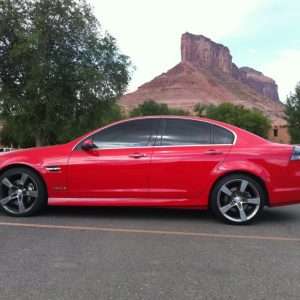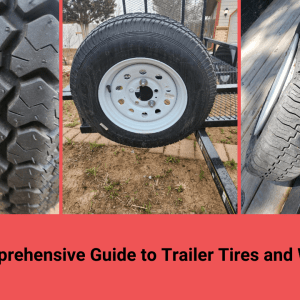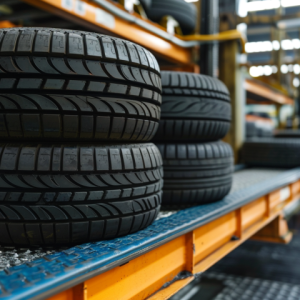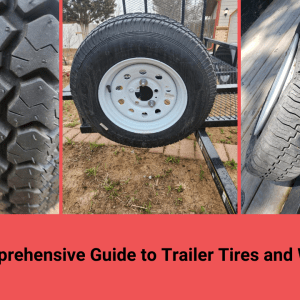Understanding Wheel Size
Choosing the right wheel size is crucial for your vehicle’s performance and aesthetics. It affects handling‚ ride comfort‚ and even fuel efficiency. A larger wheel isn’t always better. Consider the overall diameter.
It is important to consider the wheel’s width. The width will affect the tire size you can mount.
Key Considerations:
- Diameter: The overall size of the wheel.
- Width: The distance between the inner and outer flanges.
- Offset: The distance from the wheel’s mounting surface to its centerline.
Decoding Tire Size
Tire size is typically represented by a series of numbers and letters‚ such as 225/45R17. Understanding this code is essential for selecting the correct tires. Each part of the code provides specific information.
The first number (225 in this example) indicates the tire’s section width in millimeters. The second number (45) is the aspect ratio‚ representing the tire’s sidewall height as a percentage of its section width. The letter “R” indicates radial construction. Finally‚ the last number (17) is the wheel diameter in inches.
FAQ: Wheel and Tire Sizing
Q: What happens if I choose the wrong tire size?
Choosing the wrong tire size can lead to several problems. These include inaccurate speedometer readings‚ reduced handling performance‚ rubbing against the wheel wells‚ and even safety hazards. It’s a serious matter.
Q: Can I use a wider tire on my stock wheels?
It depends on the wheel’s width. Each wheel has a recommended tire width range. Exceeding this range can compromise tire performance and safety. Check the manufacturer’s specifications.
Q: How does wheel offset affect my car?
Wheel offset affects the position of the wheel relative to the vehicle’s hub. Incorrect offset can alter the vehicle’s handling characteristics‚ increase stress on suspension components‚ and cause rubbing issues. It’s a delicate balance.
Matching Wheels and Tires: A Perfect Fit?
So‚ you understand wheel and tire sizes individually‚ but how do you ensure they work together harmoniously? Is it simply a matter of finding a tire that technically fits the wheel? Not quite! Consider the overall diameter again. Does it match the original specifications?
Think about the intended use. Are you prioritizing performance‚ comfort‚ or fuel efficiency? These factors will influence your choice. A low-profile tire on a larger wheel might look great‚ but will it provide a comfortable ride on rough roads?
Choosing the right combination is an art and a science. Don’t be afraid to seek expert advice!
Questions to Ask Yourself:
- What is the recommended tire size for my vehicle’s wheel?
- Will the new wheel and tire combination affect my speedometer accuracy?
- Does the new setup provide adequate clearance within the wheel wells?
The Impact of Wheel and Tire Choice on Performance
Did you know that your wheel and tire choice significantly impacts your vehicle’s handling‚ braking‚ and acceleration? A lighter wheel reduces unsprung weight‚ improving responsiveness. But is lighter always better? What about durability?
Tire compound and tread pattern also play a crucial role. A performance tire with a sticky compound will offer superior grip‚ but will it wear out quickly? A tire with an aggressive tread pattern might be great in wet conditions‚ but will it be noisy on the highway?
Remember‚ there’s no one-size-fits-all solution. The best choice depends on your individual needs and driving style.
More FAQs: Delving Deeper
Q: What is “plus sizing” and is it a good idea?
Plus sizing involves increasing the wheel diameter while decreasing the tire’s sidewall height to maintain the same overall diameter. Does this improve handling? Does it compromise ride comfort? Is it purely for aesthetics?
Q: How do I find the correct bolt pattern for my wheels?
The bolt pattern is the diameter of the circle formed by the wheel’s bolt holes. Is it crucial to match the bolt pattern exactly? What happens if the bolt pattern is slightly off? Where can I find this information?
Q: What are run-flat tires and are they worth the investment?
Run-flat tires allow you to continue driving for a limited distance after a puncture. Do they offer a significant safety advantage? Do they affect ride quality? Are they more expensive than traditional tires?
Maintaining Your Wheels and Tires: A Long-Term Investment?
So‚ you’ve finally chosen the perfect wheel and tire combination. Is the job done? Absolutely not! Proper maintenance is key to maximizing their lifespan and performance. Are you regularly checking your tire pressure? Is it crucial to rotate your tires every few thousand miles?
What about wheel alignment? Can misaligned wheels cause uneven tire wear? Is it worth investing in regular wheel balancing? And what about cleaning? Can harsh chemicals damage your wheels’ finish?
Neglecting maintenance can lead to premature wear and costly replacements. Is it really worth the risk?
Essential Maintenance Tasks:
- Regularly check and adjust tire pressure.
- Rotate tires according to the manufacturer’s recommendations.
- Inspect tires for wear and damage.
- Ensure proper wheel alignment and balancing.
- Clean wheels with appropriate cleaning products.
Even More FAQs: The Nitty-Gritty Details
Q: What is tire cupping and what causes it?
Tire cupping is an uneven wear pattern characterized by scalloped edges. Is it a sign of suspension problems? Can it be prevented? Is it dangerous?
Q: How do I properly store my wheels and tires during the off-season?
Proper storage can prevent dry rot and other damage. Should you store them indoors or outdoors? Should you stack them or hang them? Should you cover them?
Q: What is the difference between summer‚ winter‚ and all-season tires?
Each type of tire is designed for specific weather conditions. Do summer tires offer superior grip in warm weather? Do winter tires provide better traction on snow and ice? Are all-season tires a good compromise?
Q: How do I know when it’s time to replace my tires?
Worn tires can compromise safety. Is it enough to check the tread depth? Are there other signs of wear to look for? What are the legal requirements for minimum tread depth?
Beyond the Basics: Advanced Considerations
Ready to dive even deeper into the world of wheels and tires? Are you considering upgrading to performance brakes? Will larger brakes require different wheel sizes? What about suspension modifications? Will lowering your car affect tire clearance?
And what about specialized tires for off-roading or track days? Do these tires require different wheel specifications? Are you considering using tire pressure monitoring systems (TPMS)? How do these systems work? Are they reliable?
The possibilities are endless! But remember‚ safety and performance should always be your top priorities.
Final FAQs: Tying Up Loose Ends
Q: Can I use different size tires on the front and rear axles?
Staggered setups are common on some performance vehicles‚ but are they suitable for all cars? Will it affect the car’s handling characteristics? Is it safe for everyday driving?
Q: What is “rolling diameter” and why is it important?
Rolling diameter is the actual distance a tire travels in one revolution. Does it affect speedometer accuracy? Does it impact fuel economy? How do you calculate it?
Q: How do I read the DOT code on my tires?
The DOT code provides information about the tire’s manufacturing date. Is it important to know the age of your tires? Does tire rubber degrade over time‚ even if the tires haven’t been used? Is there a recommended maximum age for tires?
Q: What are the pros and cons of using tire chains?
Tire chains provide extra traction in snowy or icy conditions. Are they easy to install and remove? Do they damage the road surface? Are they legal in all areas?
The Final Word: Making an Informed Decision
Choosing the right wheels and tires can seem daunting‚ but with a little research and planning‚ is it possible to make an informed decision that enhances your vehicle’s performance‚ safety‚ and appearance? Have you considered all the factors discussed in this article? Are you confident in your understanding of wheel and tire sizes‚ offsets‚ load ratings‚ and speed ratings?
Have you consulted with a qualified tire professional? Did you get multiple quotes? Are you aware of the warranty terms and conditions? And most importantly‚ are you excited about the new look and feel of your vehicle?
Remember‚ the journey to finding the perfect wheels and tires is an investment in your vehicle and your driving experience. Is it worth taking the time to do it right?




